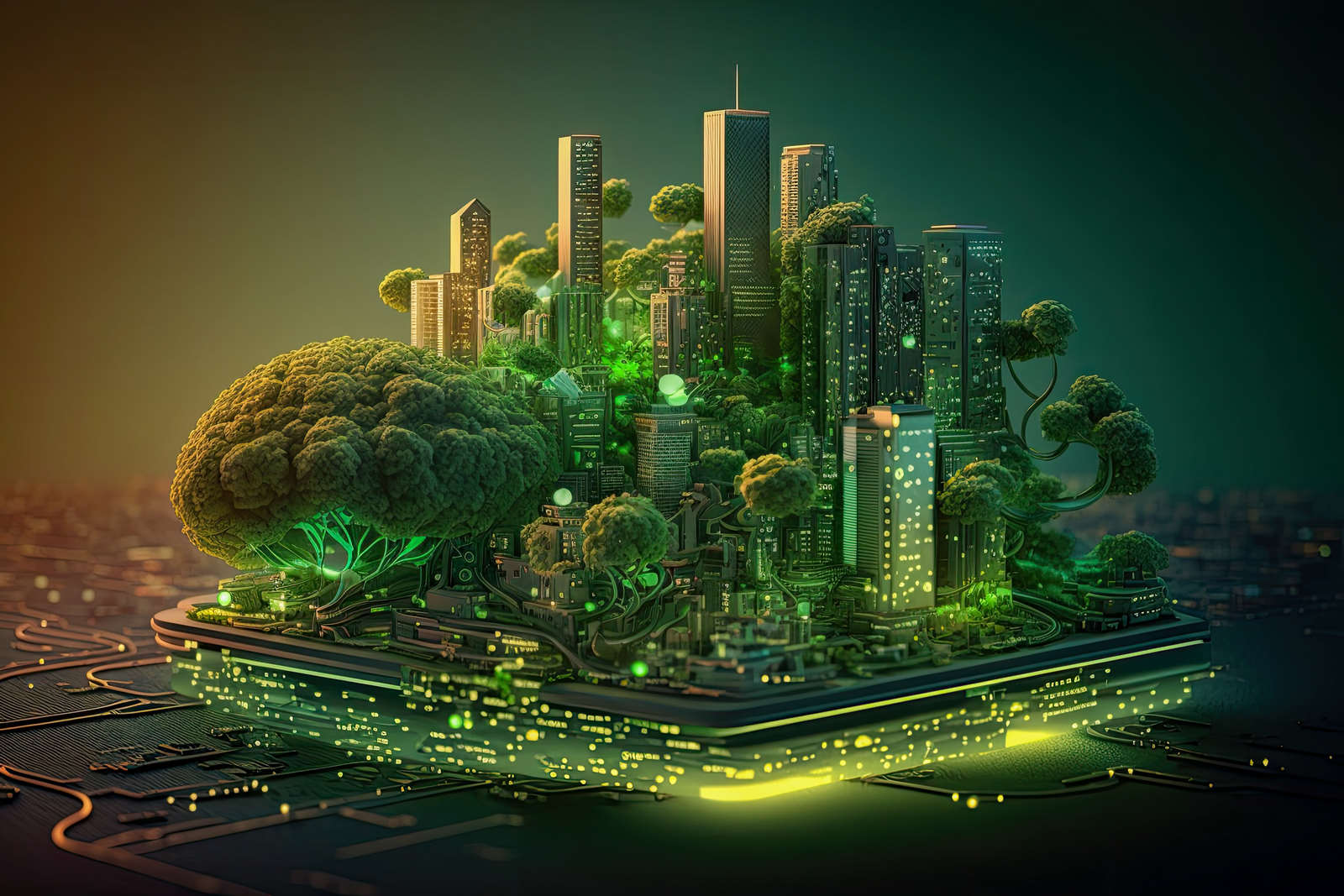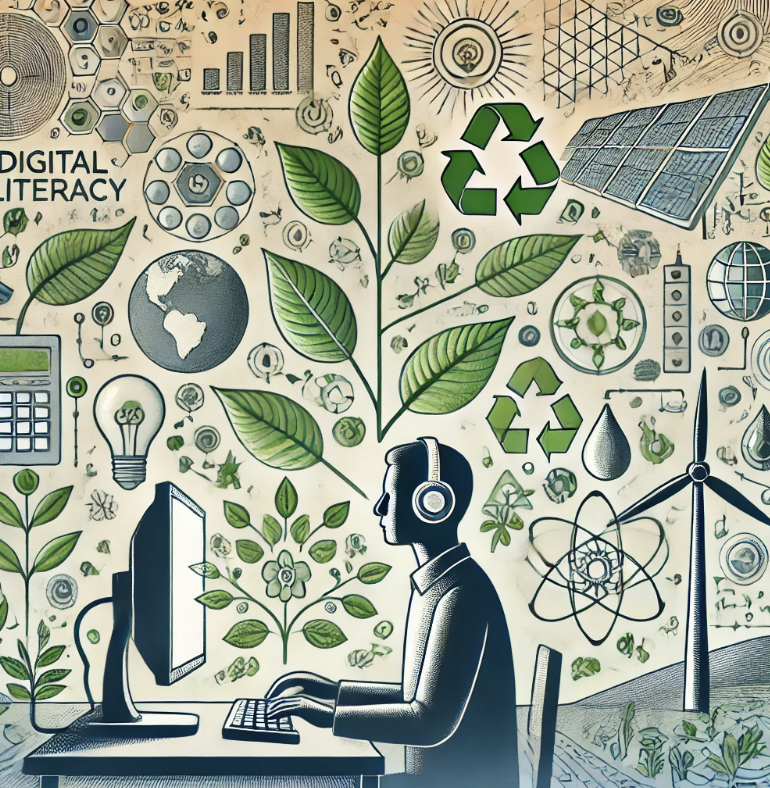Do you want to learn more about GNET ?
Click on the button below and download the guidelines for moderators to host debates.

AI tools that predict weather, track icebergs, recycle more waste and find plastic in the ocean are helping to combat climate change. Here are 8 examples.
The power of artificial intelligence (AI) to process huge amounts of data and help humans make decisions is transforming industries.
As one of the world’s toughest challenges, combating climate change is another area where AI has transformational potential.
Almost 4 billion people already live in areas highly vulnerable to climate change, according to the World Health Organization.
And this is expected to lead to around 250,000 extra deaths a year between 2030 and 2050, from undernutrition, malaria, diarrhoea and heat stress alone.
Here are eight ways AI is already helping to tackle climate change.
1. Icebergs are melting – AI knows where and how fast
AI has been trained to measure changes in icebergs 10,000 times faster than a human could do it.
This will help scientists understand how much meltwater icebergs release into the ocean – a process accelerating as climate change warms the atmosphere.
Scientists at the University of Leeds in the United Kingdom say their AI can map large Antarctic icebergs in satellite images in just one-hundredth of a second, reports the European Space Agency.
For humans, this task is lengthy and time-consuming, and it’s hard to identify icebergs amid the white of clouds and sea ice.
2. Mapping deforestation with AI
AI, satellite images and ecology expertise are also being used to map the impact of deforestation on the climate crisis.
Space Intelligence, a company based in Edinburgh, Scotland, says it is working in more than 30 countries and has mapped more than 1 million hectares of land from space using satellite data.
The company’s technology remotely measures metrics, such as deforestation rates and how much carbon is stored in a forest.
3. AI is helping communities facing climate risks in Africa
In Africa, AI is being used in a United Nations project to help communities vulnerable to climate change in Burundi, Chad and Sudan.
The IKI Project uses AI technology to help predict weather patterns, so communities and authorities can better plan how to adapt to climate change and mitigate its impact.
This includes improving access to clean energy, implementing proper waste management systems and encouraging reforestation.
4. Using AI to recycle more waste
Another AI system is helping to tackle climate change by making waste management more efficient.
Waste is a big producer of methane and is responsible for 16% of global greenhouse gas (GHG) emissions, according to the United States Environmental Protection Agency.
Greyparrot, a software startup based in London, United Kingdom, has developed an AI system that analyzes waste processing and recycling facilities to help them recover and recycle more waste material.
The company tracked 32 billion waste items across 67 waste categories in 2022, and says it identifies 86 tonnes of material on average that could be recovered but is being sent to landfill.
AI is helping to fight climate change in systems, including those that identify plastic pollution in the ocean.
5. AI is cleaning up the ocean
In the Netherlands, an environmental organization called The Ocean Cleanup is using AI and other technologies to help clear plastic pollution from the ocean.
AI that detects objects is helping the organization create detailed maps of ocean litter in remote locations. The ocean waste can then be gathered and removed, which is more efficient than previous cleanup methods using trawlers and aeroplanes.
6. AI helps predict climate disasters
In São Paulo, Brazil, a company called Sipremo is using AI to predict where and when climate disasters will occur, and what type of climate disasters they will be.
The aim is to help businesses and governments better prepare for climate change and the growing challenges for communities that come with it.
The company works in industries including insurance, energy, logistics and sport, where its analysis of disaster conditions and factors such as air quality can inform decisions on whether to delay or suspend events.
7. A wish list of AI climate tools
Google DeepMind, Google’s AI research laboratory, says it is applying AI to help fight climate change in a number of areas.
This includes building a complete wishlist of datasets that would advance global AI solutions for climate change. Google DeepMind is working on this with Climate Change AI, a non-profit organization set up by volunteers from academia and industry who see a key role for machine learning in combating climate change.
Other Google AI tools are focused on improving weather forecasting and increasing the value of wind energy by better predicting the output from a wind farm.
8. How AI can help industry decarbonize
AI is being used to help companies in the metal and mining, oil, and gas industries to decarbonize their operations.
Eugenie.ai, based in California, United States, has developed an emissions-tracking platform that combines satellite imagery with data from machines and processes.
AI then analyzes this data to help companies track, trace and reduce their emissions by 20-30%.
Industrial sectors generate around 30% of greenhouse gas emissions globally.
The potential of AI in the future
AI is one of the key emerging technologies explored in the World Economic Forum’s Top 10 Emerging Technologies of 2023 report.
The report specifically looks at generative AI – a type of AI that creates content including text, images and computer programming.
In the future, generative AI could be used in contexts such as drug design, architecture and engineering, the Forum says.
AI can also be used to improve agriculture and reduce its environmental impact by processing data from sensors placed on crops.
The technologies listed in the report, including sustainable aviation fuel, can be used to help tackle global challenges like the climate crisis – but more innovation is needed, the authors point out.
Written by
Victoria Masterson, Senior Writer, Forum Agenda
Website
This article was originally published by the World Economic Forum on 4 January 2024.
You must be logged in to post a comment.








Click on the button below and download the guidelines for moderators to host debates.
The blog post correctly highlights 8 ways AI is combating climate change. From tracking melting icebergs and deforestation to predicting weather disasters and cleaning plastic from oceans, AI is proving to be a valuable tool. AI’s ability to analyze vast amounts of data is being used to improve efficiency in waste management and recycling, optimize renewable energy production, and even help industries reduce emissions. The future holds even more potential for AI in sustainability efforts, with possibilities like generative AI for designing eco-friendly solutions and improved agricultural practices.
As a non-professional, the most intuitive manifestation of AI in my life is still the generative AI-ChatGPT. After reading the article, I was surprised to find out how much AI algorithms play a role in dealing with climate change issues. For example, combining maps and satellites to predict disasters, using classification algorithms to identify marine debris, etc. AI has efficiently done many environmental surveys, greatly saved manpower and speeded up the response to climate change.
This is truly the most amazing thing that can be done with AI. This is what it should be used for instead of taking artist’s jobs
Very interesting information!
It’s clear from the report that AI, along with other technologies such as sustainable aviation fuel, has significant potential to contribute to global solutions, particularly in the fight against climate change. However, achieving this potential requires continued innovation and a collaborative approach to harness AI responsibly and effectively.
The use of AI in combating climate change is a perfect example of how technology can be a force for good. It’s fascinating to see how AI can tackle challenges that were once too complex or time-consuming for humans, like mapping iceberg melt or detecting ocean plastics. However, while these advancements are impressive, they also highlight the urgency of scaling these solutions. Technology alone won’t solve the climate crisis—we need global collaboration and policy changes to complement these tools. AI gives us hope, but it must be part of a larger, concerted effort to make a real impact.
While I agree with many points in this article, for example predicting climate disasters, I have to disagree with the optimism about the prosperity of AI. For example, some AI language models use large data centers which consume a lot of electricity and water for cooling, potentially causing the opposite effect of what this article suggests.
The use of artificial intelligence can be an effective method for analysing the effects of climate change, in particular for identifying countermeasures against climate disasters. However, it is important to consider that the use of AI has a greater environmental impact than other types of software. Therefore, it would be advisable to limit the use of AI and enhance other technologies for analysing climate change. Furthermore, companies that develop these AIs should be encouraged to become ‘net zero’ companies in order to eliminate the negative impact on the environment from the use of this technology.
I think this article highlights an exciting and vital role for AI in combating climate change. The use of AI to track melting icebergs, predict weather patterns, and improve recycling is impressive. AI’s ability to process data quickly helps scientists and governments better respond to climate risks.
While AI is already making a difference, we could try to push for more innovation. I thinnk AI has great potential to help the environment.